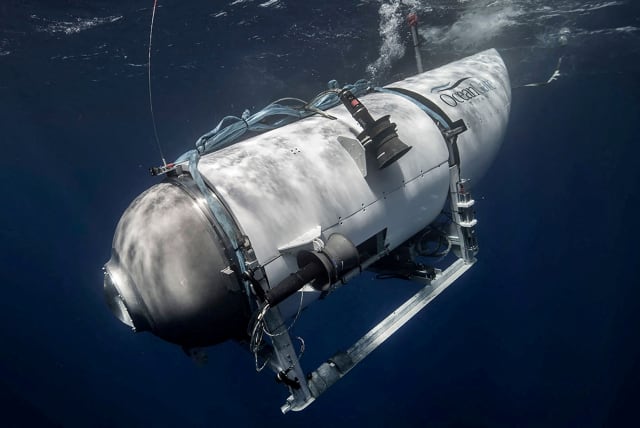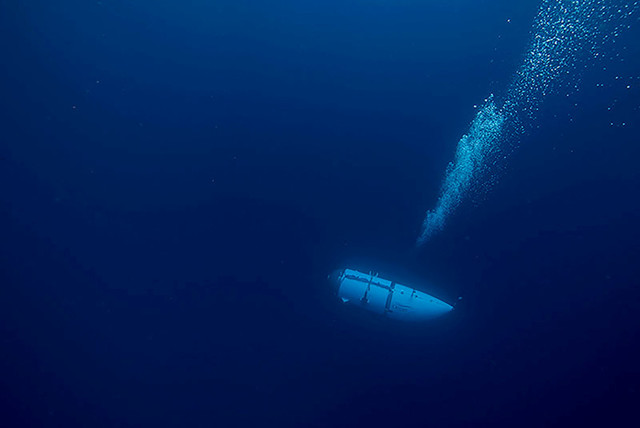What did the final moments of the Titan sub crew look like?

Debris from the Titan submersible indicates that a catastrophic implosion destroyed the sub and instantly killed the five passengers onboard.
All five people aboard the Titan submersible have been pronounced dead by the US Coast Guard after several days of round-the-clock searching for the lost vessel.
Although the bodies of those aboard have not been found, debris from the submersible was located and authorities said that the debris was consistent with signs of a “catastrophic implosion” which destroyed the submersible and killed the passengers inside.
The Titan, which was on an expedition to visit the wreckage of the Titanic, set off from St. John’s, Newfoundland, Canada on Friday, June 16 and began its descent to the site of the famous shipwreck at 8 A.M. on Sunday, June 18.
Communication between the sub and the surface was lost about an hour and 45 minutes into its descent. It was scheduled to return to the surface at 3:00 p.m. but never reappeared.
The coast guard was notified about the missing vessel a few hours later, and by Monday a massive search and rescue operation was underway. Officials stated that if the sub was still intact and those aboard were still alive, they had between 70 and 96 hours of oxygen left.
The search continued in a race against the clock until pieces of the submersible were found on Thursday, approximately 12,500 feet below the surface and 1,600 feet from the bow of the Titanic wreck.
US Coast Guard Rear Admiral John Mauger stated in a press conference that the debris found was “consistent with a catastrophic loss of the pressure chamber.” The sub’s hull is still missing but authorities confirmed that debris would only have been found in the case of an implosion.
Experts agree on Titan's implosion
David Russell, a former Royal Navy submariner who led the UK’s search for the Kursk submarine in 2000, told Sky News that the pressure hull is where the passengers would have been sitting.
“It’s that pressure hull which would have to withstand the pressure that you experience at a depth of 4,000m,” he stated.
Russell said he believes the implosion of the hull means those inside the capsule would have been killed “instantaneously”.
David Mearns, a dive expert and friend of Titan passengers Hamish Harding and Paul-Henry Nargeolet, told the BBC that the debris includes “a landing frame and a rear cover from the submersible,” and that it confirmed what experts had feared about the sub’s fate from the beginning.
“The only solace in any of it is they didn’t suffer for four days,” Mearns said in an interview with the BBC, as he expressed his grief at the loss of his friends and the other passengers.
Ofer Ketter, co-founder of a private submersible company called Sub-Merge, told the New York post that if something breached the hull and caused a sudden loss of pressure within the vessel, the implosion would have happened in a millisecond, maybe even a nanosecond.
"They never knew it happened, which is actually very positive in this very negative situation,” Ketter said of the five victims. “It was instantaneous - before even their brain could even send a type of message to their body that they’re having pain.”
Oceanographer and Harvard University professor Dr. Peter Girguis told the New York Post that the submersible was similar to a scuba tank.
“When a scuba tank is overfilled there’s a safety device that releases gas very quickly. At least that’s the plan,” Girguis said. “When you take the equivalent of a scuba tank and you want it to hold the pressure out, it’s a different story - because if you go beyond the strength of the vessel, then it crushes or collapses.”
While Girguis agrees that the implosion was sudden, he clarified that we could not know for certain what the five victims on the Titan experienced in their final moments.
“We tend to believe they are swift and they tend to be complete, but I want to emphasize again, we don’t exactly know,” he told the Post.
Haunting videos show Titan's final moments
Digital and animated reenactments of what the submersible’s implosion may have looked like from the outside are being shared on TikTok.
One haunting video showed the Titan sub plummeting towards the ocean floor before entirely crumpling in on itself like a crushed can.
“The instant collapse of the pressure, the hull would immediately heat the air in the sub to around the surface of the sun’s temperature, as a wall of metal and seawater smashed one end of the boat to the other, all in around 30 milliseconds,” the caption reads.
@starfieldstudio Submarine implosion demonstration. Educational #submarine #titan #titanic ♬ Amityville Horror Scary Halloween Sound Effects
Another video depicts a military submarine floating above the sea floor before suddenly flattening, curling up, then bursting into pieces.
“So this is essentially what happens when a submarine implodes underwater,” the narrator says. “It’s very instantaneous as far as death when it comes to any lives that may be onboard.”
The US Coast Guard and other experts have stated that the bodies of the five victims may never be recovered, due to the unforgiving nature of the deep sea environment on the ocean floor and the fact that the violent implosion means there may not be any remains left to recover.
Jerusalem Post Store
`; document.getElementById("linkPremium").innerHTML = cont; var divWithLink = document.getElementById("premium-link"); if (divWithLink !== null && divWithLink !== 'undefined') { divWithLink.style.border = "solid 1px #cb0f3e"; divWithLink.style.textAlign = "center"; divWithLink.style.marginBottom = "15px"; divWithLink.style.marginTop = "15px"; divWithLink.style.width = "100%"; divWithLink.style.backgroundColor = "#122952"; divWithLink.style.color = "#ffffff"; divWithLink.style.lineHeight = "1.5"; } } (function (v, i) { });

